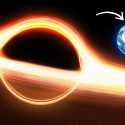On December 25th, 2021, NASA launched the successor to the Hubble Space Telescope, the James Webb Space Telescope. Hubble has provided and continues to provide us with some of the most magical pictures of our Universe, but the JWST is projected to be 100 times more powerful than Hubble.
Built over 30 years, the JSWT is designed to capture more light and detail than Hubble ever could. This will let astronomers gather more information and allow them to dig deeper into the history of the Universe than ever before.
About six months after its launch, the JWST delivered the most detailed image of the Universe ever taken. Known as Webb’s First Deep Field, the image isn’t just star-studded. It’s galaxy studded. In this image, you see galaxies that span an enormous distance and maybe an even greater duration of time.
The distances we’re dealing with here are so large that it would take millions, maybe billions of years, to travel them even at light speed. When we look at these images, we’re looking into the past. This pale red dot, for example, is a galaxy that appeared 13.1 billion years ago. We know this because that’s how long it has taken the light from it to reach us.
But for all its size, do you know how much of the night sky that everything in this entire image would cover? Just about the width of a grain of sand held at arm’s length. There are hundreds of billions of other galaxies in the observable Universe, and some scientists even put that number in the trillions. These galaxies, in turn, have hundreds of billions of star systems much like our own, and these star systems have planets orbiting around them. What are the chances that there wouldn’t be another planet with life in some far-away galaxy? What are the chances that in this incredible vastness of space, we’re all alone?
You see, no matter how difficult it is for life to exist, and no matter how rare it is, the Universe is so big that there should be millions, if not billions, of planets able to support life. You can define whatever requirements you want for life – temperature, distance from a star, number of moons, presence of water, number of asteroid impacts, etc. Purely by chance, there should be many planets with life on them, and surely some of that life would be intelligent enough to reach out to us. Right? It’s not like the laws of physics, chemistry, or biology are exclusive to Earth; they’re not. But, if there is life on other planets, if there’s nothing special about Earth, where’s everybody else? Where are all the aliens?



























